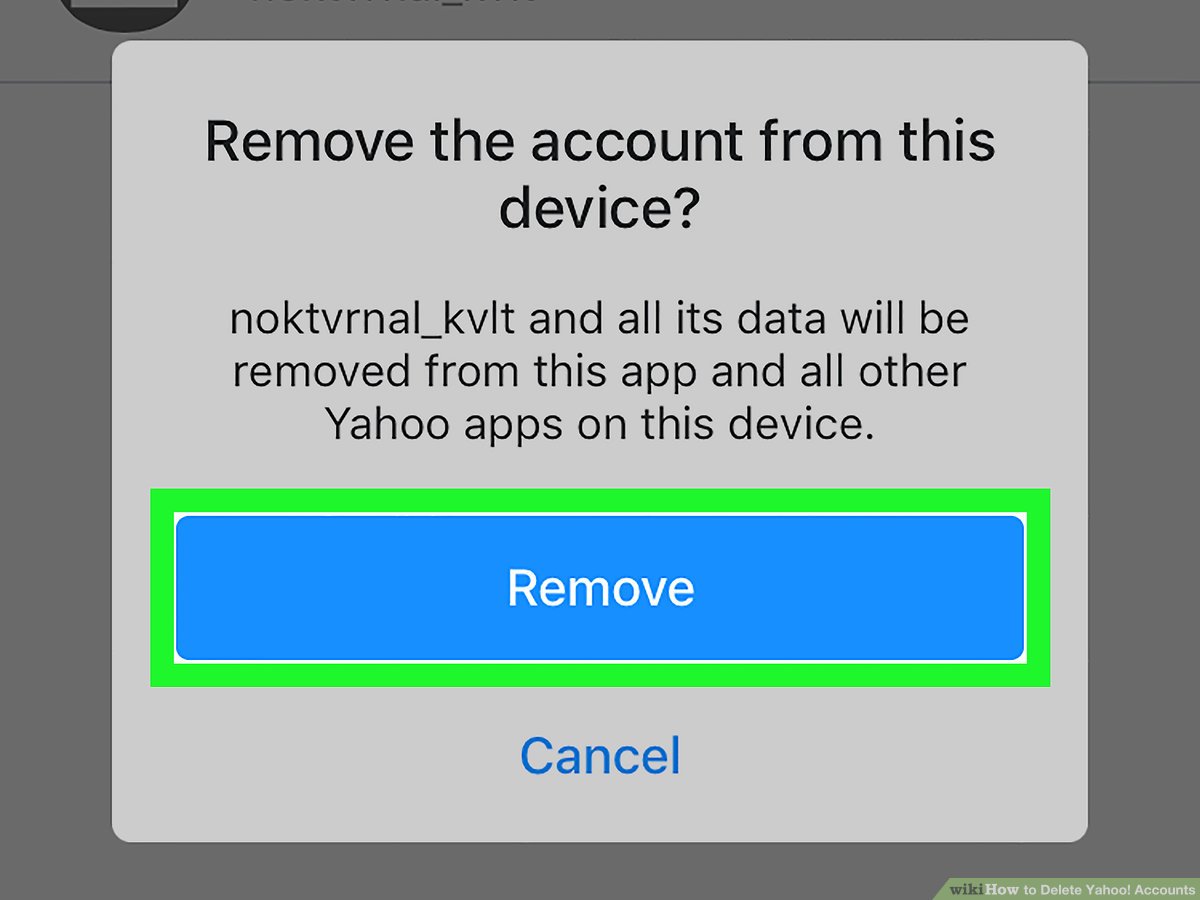Home>Finance>How Do I Shut Down A Yahoo Small Business Website?


Finance
How Do I Shut Down A Yahoo Small Business Website?
Published: November 25, 2023
Discover how to effectively shut down your Yahoo Small Business website without any financial repercussions. Learn the steps and important considerations for managing your finances during this process.
(Many of the links in this article redirect to a specific reviewed product. Your purchase of these products through affiliate links helps to generate commission for LiveWell, at no extra cost. Learn more)
Table of Contents
Introduction
Welcome to the world of Yahoo Small Business websites! As a business owner, you may find yourself in a situation where you need to shut down your Yahoo Small Business website. Whether you’re rebranding, moving to a different platform, or simply closing your business, it’s important to understand the steps involved in gracefully shutting down your website.
In this guide, we will walk you through various options and considerations for closing your Yahoo Small Business website. From canceling your account to transferring your domain, we’ll cover all the necessary steps to ensure a smooth transition.
Before we dive into the specifics, it’s essential to note that shutting down a website is a significant decision. It’s crucial to consider the impact it may have on your online presence, search engine rankings, and any existing customers or visitors. Take the time to carefully evaluate your options and weigh the potential consequences before proceeding.
Now, let’s explore the different options available to you when shutting down your Yahoo Small Business website.
Option 1: Canceling your Yahoo Small Business account
If you have made the decision to completely shut down your Yahoo Small Business website, canceling your account is a straightforward option. However, before taking this step, it’s essential to consider any potential ramifications and take appropriate actions.
First, make sure to back up any important files or data from your website. This includes images, documents, and any custom code or scripts that you may have implemented. Once your Yahoo Small Business account is canceled, you will no longer have access to these files.
To cancel your Yahoo Small Business account, follow these steps:
- Log in to your Yahoo Small Business account.
- Navigate to the Account Management section.
- Locate the option to cancel your account.
- Follow the on-screen instructions to confirm the cancellation.
After canceling your account, your website will no longer be accessible to visitors. Additionally, your domain name may become available for purchase by others.
It’s important to consider the impact canceling your Yahoo Small Business account may have on your email services. If you have been using Yahoo’s email service for your business, you may lose access to those email accounts as well. Be sure to back up any necessary emails, contacts, or other important information before canceling your account.
Lastly, remember to update any external links or references to your Yahoo Small Business website. Redirecting these links to your new website or providing alternative contact information will ensure a seamless transition for your customers and visitors.
Canceling your Yahoo Small Business account allows you to completely remove your website from the platform. However, it’s important to consider other options if you still want to keep your domain name or if you want to maintain an online presence with a different hosting provider.
Option 2: Redirecting your domain to another website
If you’re looking to keep your domain name but move your website to a different hosting provider or platform, redirecting your domain is a suitable option. This allows you to maintain your online presence while seamlessly directing visitors to your new website.
Before proceeding with this option, ensure that you have set up your new website with a different hosting provider or platform. Once you have done that, follow these steps to redirect your domain:
- Log in to your Yahoo Small Business account.
- Navigate to the Domain Control Panel.
- Find the domain you want to redirect and select it.
- Look for the DNS settings or forwarding options.
- Specify the URL of your new website in the appropriate field.
- Save the changes.
By redirecting your domain, anyone who visits your old Yahoo Small Business website will automatically be redirected to your new website. This ensures that you don’t lose any potential visitors and helps maintain continuity for your brand.
It’s important to note that it may take some time for the domain redirection to propagate across the internet. During this time, visitors may still be directed to your old website. However, as the changes propagate, the redirection will become effective for all users.
Additionally, remember to update any internal links on your new website to reflect the change in domain name. This includes updating navigation menus, footer links, or any other references to the old domain.
Redirecting your domain to another website allows you to maintain your online presence while transitioning to a different hosting provider or platform. It provides a seamless experience for visitors and ensures that you can continue to leverage the domain name you have established.
Option 3: Transferring your domain to a different registrar
If you want to retain ownership of your domain name but prefer to manage it with a different registrar, transferring your domain is a suitable option. This allows you to maintain control over your domain while using a different service provider for domain management.
Before initiating the domain transfer process, it’s crucial to determine which registrar you want to transfer your domain to. Research different registrars to ensure they meet your requirements in terms of pricing, features, customer support, and ease of use.
Once you have selected a new registrar, follow these general steps to transfer your domain:
- Register an account with the new registrar.
- Initiate the domain transfer process within the new registrar’s interface.
- Follow their specific instructions to provide the necessary authorization codes or transfer requests.
- Pay any applicable transfer fees.
- Wait for the transfer process to complete, which can take several days.
During the transfer process, it’s important to maintain access to your Yahoo Small Business account. This ensures that you can continue managing your website and email services until the transfer is complete.
Transferring your domain allows you to maintain control over your domain name while enjoying the benefits of a different registrar. It gives you the flexibility to choose a registrar that aligns better with your needs and preferences.
Once the domain transfer is complete, remember to update any necessary DNS settings within your new registrar’s control panel. This ensures that your website and email services are properly configured and accessible with the new registrar.
It’s important to note that transferring a domain may incur additional costs and can temporarily affect your website’s availability. However, these inconveniences are typically minimal and outweighed by the benefits of using a registrar that better suits your needs.
Option 4: Deleting all website files and content
If you no longer need your Yahoo Small Business website or domain and want to completely remove all website files and content, deleting your website is the appropriate option. However, it’s important to proceed with caution, as this action is irreversible and permanently removes all data associated with your website.
Before deleting your website, make sure to back up any important files, images, or documents that you may want to retain. Once you delete your website, you will no longer have access to these files.
To delete your website on Yahoo Small Business, follow these steps:
- Log in to your Yahoo Small Business account.
- Navigate to the website management section.
- Look for the option to delete your website or close your account.
- Follow the provided instructions to confirm the deletion.
Once your website is deleted, it will no longer be accessible to visitors. Additionally, your domain name may become available for purchase by others.
It’s crucial to remember that deleting your website also affects other services associated with your Yahoo Small Business account, such as email accounts or other domain-related services. Take necessary actions to back up any important emails, contacts, or other data before proceeding.
Finally, it’s essential to update any external links or references to your Yahoo Small Business website. Removing or redirecting these links to alternative websites or contact information will prevent visitors from encountering broken links or outdated information.
Deleting your website is a definitive action that removes all traces of your Yahoo Small Business website and domain. It’s important to carefully evaluate the consequences and have a plan in place for transitioning to a new online presence, if applicable.
Conclusion
Shutting down your Yahoo Small Business website requires careful consideration and the understanding of the available options. Whether you choose to cancel your account, redirect your domain, transfer your domain to a different registrar, or delete your website entirely, each option has its own implications and considerations.
Before making a decision, it’s essential to assess the impact on your online presence, search engine rankings, and any existing customers or visitors. Take the time to back up important files or data, update external links, and inform your audience of any changes.
If you decide to cancel your Yahoo Small Business account, make sure to retrieve any necessary files and consider the implications on your email services. If you want to maintain your domain name but move to a different platform, redirecting your domain ensures a seamless transition for visitors. Transferring your domain to a different registrar allows you to retain ownership and better management capabilities. And finally, if you no longer need your website or domain, you can delete all content and files.
Remember, each option has its own pros and cons, so choose the one that aligns best with your goals and requirements. If you have any concerns or questions, it’s recommended to reach out to customer support for further guidance.
Whatever path you choose, be proactive in informing stakeholders and taking necessary actions to ensure a smooth transition. By carefully considering all the options and making informed decisions, you can effectively shut down your Yahoo Small Business website while minimizing any negative impacts on your online presence and business.














